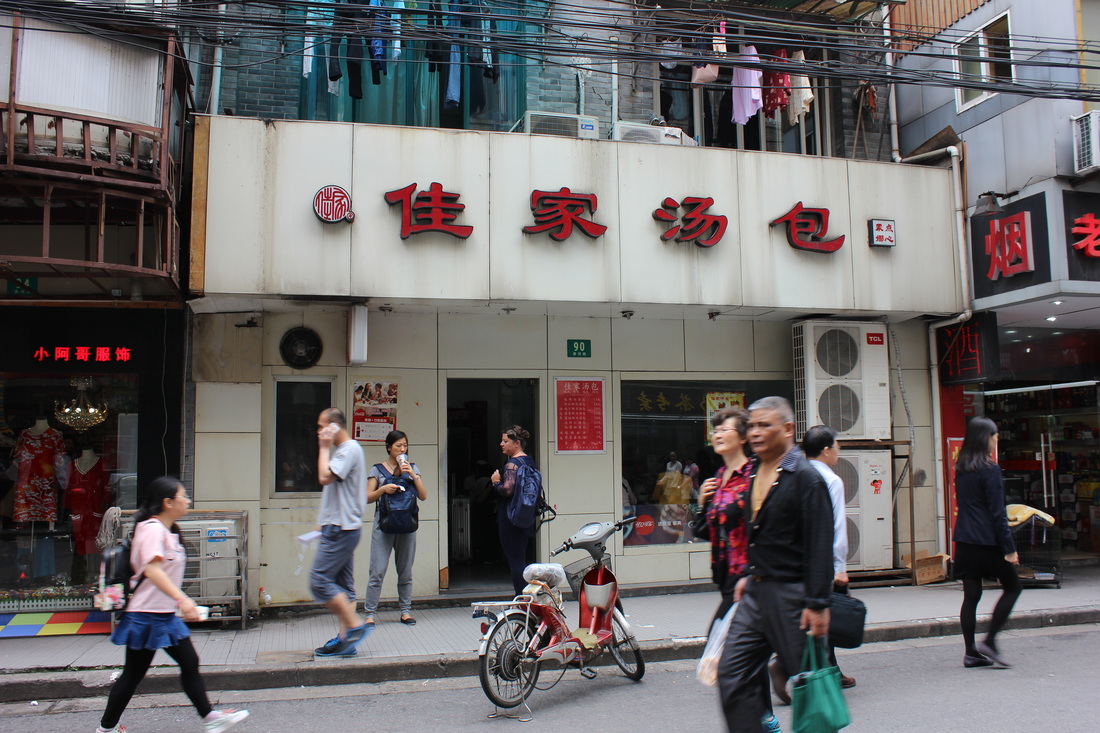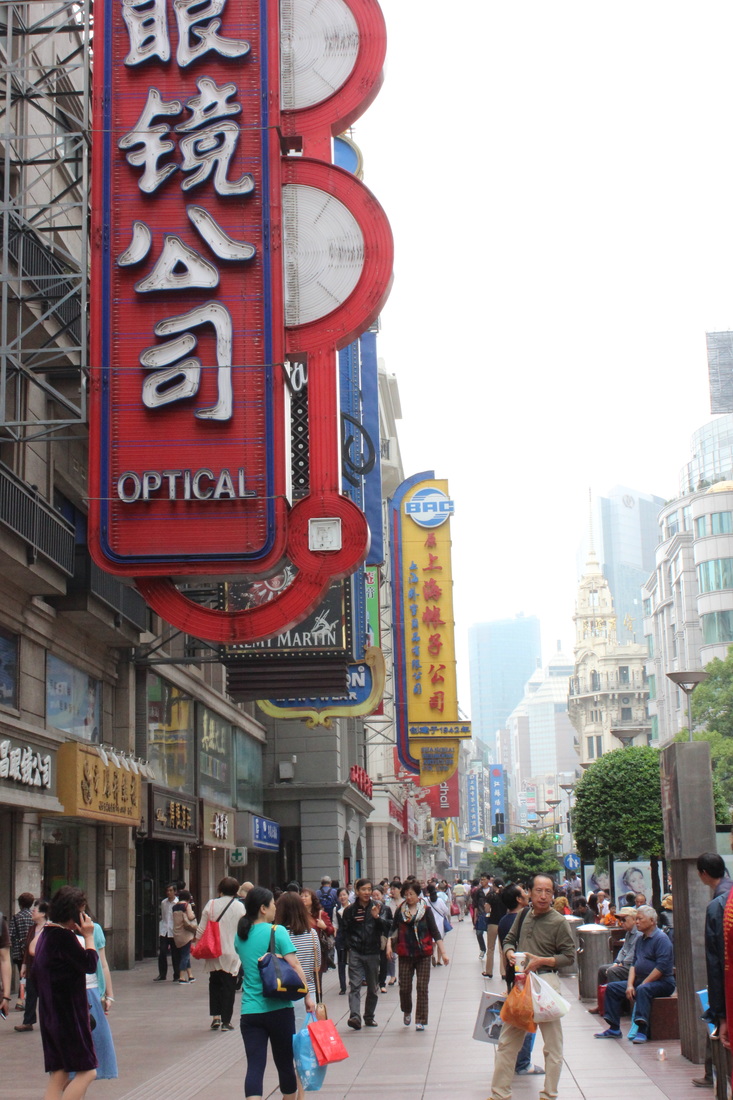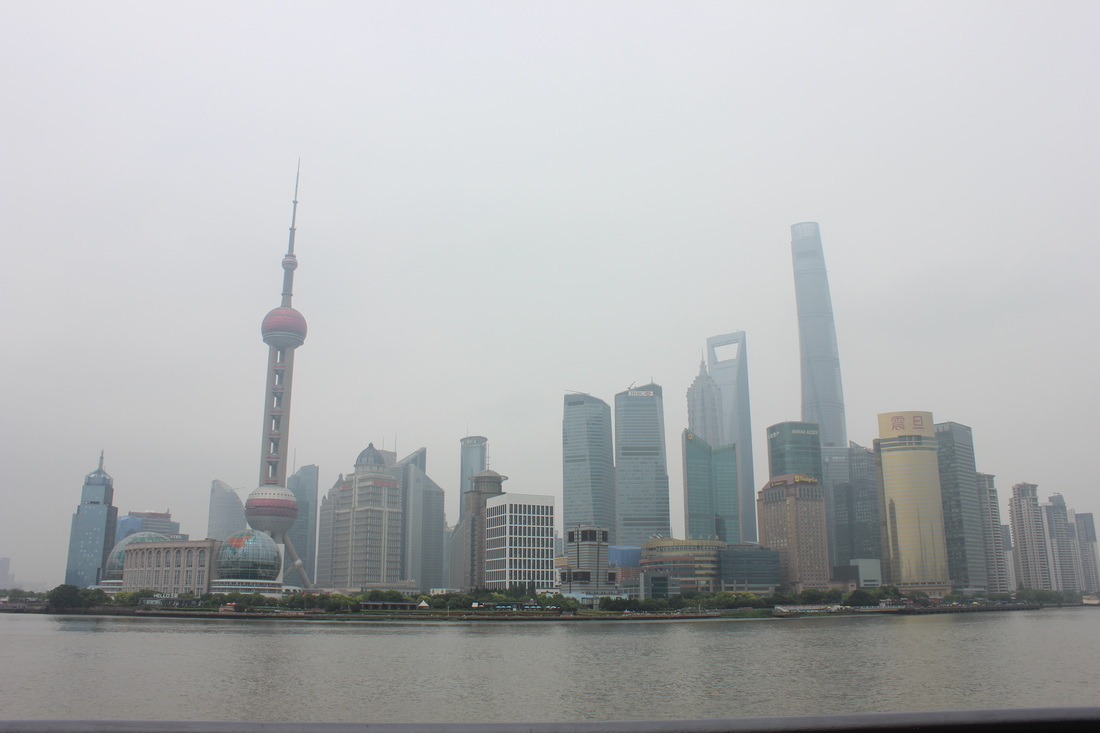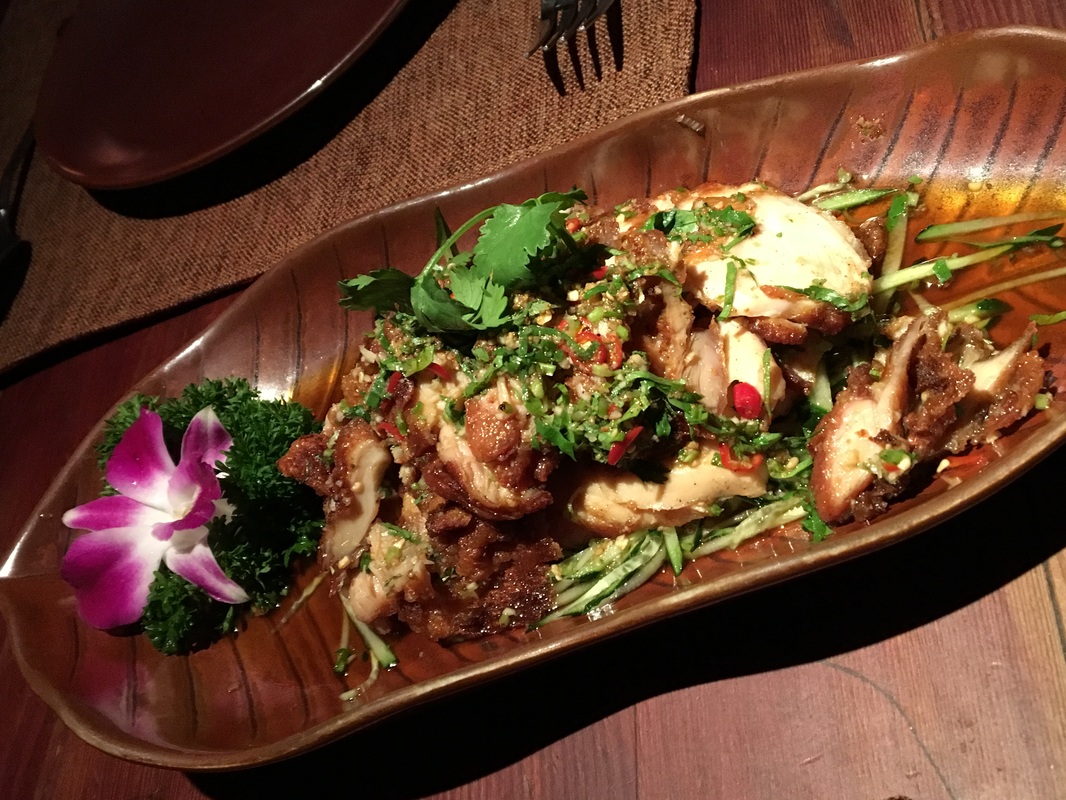Shanghai was the port of entry into my first ever China experience. A cosmopolitan city, with high rises, designer stores, luxury hotels, charming cafes, and street side restaurants, Shanghai is growing to become a rival for Hong Kong. Shanghai is also where I battled my greatest jet leg after taking a 14½ hour flight from Toronto. To my defense, it wasn’t just all jetlag but also an accumulation of sleepless nights leading up to my flight, a hangover from birthday celebrations two days before, and a broken finger in a sling from a break just that week. But with only 2 days in Shanghai, I was determined to barrel through finding moments to sleep if for just 5 minutes on the metro and in cabs.
By June, the city is already hot with a heaviness of humidity so dense that even in the cooler 75F/24C temperatures, one would still find a layer of sweat on their bodies. The infamous haze of the city also hangs low leaving skyline photos appearing as if one went too crazy with the Instagram fade filter.
Despite the jetlag, the haze, and the humidity, Shanghai was exhilarating. We began our day in the French Concession, a neighborhood that is named from the period it was a foreign concession for the French up until 1943 when the Vichy government signed it over to the Japanese. The neighborhood is chic and filled with cafes, bars and restaurants that are housed in art deco buildings.
From there we walked to the People’s Square where the Shanghai Museum is located. The massive building houses a collection as large as the country’s history. The artifacts are impressive and worth the visit.
Nearby is Huanghe Road where two must-try dumpling places are located. We made our first stop at Jia Jia Tang Bao (佳家汤包), a beloved hole-in-the-wall and ordered steamed pork dumplings. We grabbed two available seats on plastic chairs at a shared table that was cramped into the adjacent room. Our pork filled dumplings arrived in a bamboo steamer and were juicy, flavorful and absolutely delicious. As soon as we ate our last dumpling, we were hustled away by the restaurant worker to make room for the next customers. You do not come to linger over a leisure lunch. You eat and leave.
Nearby is Huanghe Road where two must-try dumpling places are located. We made our first stop at Jia Jia Tang Bao (佳家汤包), a beloved hole-in-the-wall and ordered steamed pork dumplings. We grabbed two available seats on plastic chairs at a shared table that was cramped into the adjacent room. Our pork filled dumplings arrived in a bamboo steamer and were juicy, flavorful and absolutely delicious. As soon as we ate our last dumpling, we were hustled away by the restaurant worker to make room for the next customers. You do not come to linger over a leisure lunch. You eat and leave.
Across the street is Yang’s Fry Dumplings (小杨生煎馆吴江路店). We ordered up more dumplings, but this time the vegetable filled dumplings are fried, leaving a crispy bottom and then sprinkled with scallions on top. They ended up being my favorite.
We walked off our lunch and followed Nanjing Road, a large pedestrian street lined with designer shops, down to the Bund, the city’s waterfront with the iconic view of the Pudong skyline. The buildings that line the waterfront showcase the colonial era of the mid-19th century. Beware that you will battle the haze and selfie sticks to get a shot of the skyline.
The Yuyuan Gardens are next on the list. Lonely Planet describes them as “shaded alcoves, glittering pools churning with fish, pavilions, pine sprouting wistfully from rockeries, and roving packs of Japanese tourists.” All of the above I was excited for, but first one must pass through the bazaar that surrounds the garden. The bazaar is lined with shops selling tacky trinkets, store owners hassling you as you walk by, and dense crowds of selfie-taking tourists where death by selfie stick actually becomes a possibility. Once you manage to duck, swerve, and dodge your way into the gardens, you are treated to an instant serenity. Though there may be crowds of other tourists seeking the same experience, the botanical gardens, and flowing waterfalls offer a zen moment from the chaos that exists outside.
The Yuyuan Gardens are next on the list. Lonely Planet describes them as “shaded alcoves, glittering pools churning with fish, pavilions, pine sprouting wistfully from rockeries, and roving packs of Japanese tourists.” All of the above I was excited for, but first one must pass through the bazaar that surrounds the garden. The bazaar is lined with shops selling tacky trinkets, store owners hassling you as you walk by, and dense crowds of selfie-taking tourists where death by selfie stick actually becomes a possibility. Once you manage to duck, swerve, and dodge your way into the gardens, you are treated to an instant serenity. Though there may be crowds of other tourists seeking the same experience, the botanical gardens, and flowing waterfalls offer a zen moment from the chaos that exists outside.
That night we meet up with an old university friend who now lives in Shanghai. He takes us to a restaurant from the Xinjiang province, an autonomous territory in northwest China. Part of the Silk Road, the region is majority Muslim and mirrors closer to Central Asia than to eastern China. Our table quickly fills with lamb kebabs, hummus, pita and other Xinjiang specialties. I’m excited to try the food as I just finished reading Peter Hessler’s Oracle Bones, Hessler’s story about living in China. One of his closest friends is a Uyghur, the ethnic group of the region who closely identify with the Turks, and they frequently eat at Xinjiang restaurants.
Once our bellies are filled, we venture back to the Bund to see Pudong light up in bright colors. Take note that the lights go off at 10:30pm so get there with time to walk the waterfront and admire Pudong’s skyline from different angles.
Once our bellies are filled, we venture back to the Bund to see Pudong light up in bright colors. Take note that the lights go off at 10:30pm so get there with time to walk the waterfront and admire Pudong’s skyline from different angles.
Shanghai is surrounded by small fishing villages with quant canals lined by cafes and shops. On our second day in Shanghai, we chose to visit Suzhou, a small, cute city of just 10 million people. It’s pronounced Su-jou, but I kept calling it so-ju, which is in fact a Korean alcohol. I was met with a great many confusion by people who wondered what I could possibly be doing by going to a Korean alcohol. In reality, Suzhou is a charming place with boats floating down canals, hip coffee shops and cafes, as well as a bustling downtown.
My last night in Shanghai, we ate at Lost Heaven, a restaurant in the French Concession, with cuisine from the Yunnan province, a region in the southwest part of the country where my roommate spent a year back in 2009. We ordered crispy chicken, vegetable pancakes, and several other dishes that are eaten with tea and beer. The restaurant is housed in a beautiful building whose clientele create a bustling and trendy atmosphere.
Shanghai was a good first hit to help me break the ice of China. I started to ease into the massive crowds, the hectic life, and the foreign habits, just in time to head to the western part of the country. But first I must travel to the airport on the metro during rush hour with luggage and a broken finger. Now I am ready for anything.













